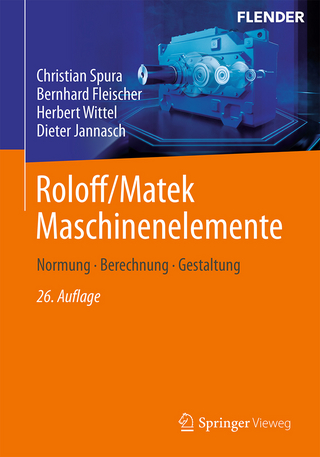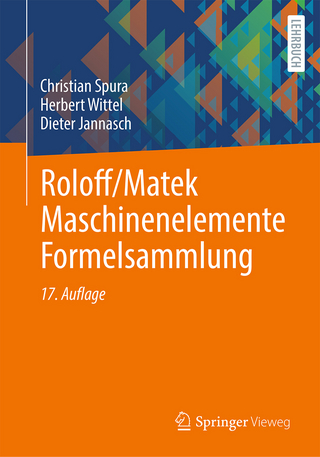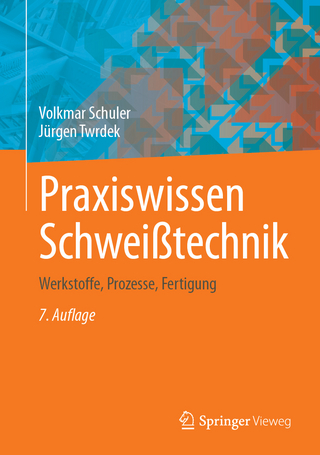
Electroceramics for High Performance Supercapicitors
Wiley-Scrivener (Verlag)
978-1-394-16625-1 (ISBN)
- Titel ist leider vergriffen;
keine Neuauflage - Artikel merken
In the near future, high-energy density materials will be required to accommodate the increased demand for gadgets, hybrid cars, and massive electrical energy storage systems. Fuel cells, supercapacitors, and batteries have the highest energy densities, but traditional capacitors have gained attention for intermittent energy harvesting owing to their high energy transfer rate and quick charging/discharging capability. The large amount of electric breakdown strength and modest remnant polarization are keys to the high energy density in dielectric capacitors. Above 100??C or 212??F, polymer dielectric capacitors become unstable and begin to suffer a dielectric breakdown. Hence, dielectric ceramics are the sole viable option for high-temperature applications.
This book provides a basic understanding of dielectric-based energy harvesting. After a detailed analysis of the state-of-the-art, it proceeds to explain the specific strategies to enhance energy storage features, including managing the local structure and phases assembly, raising the dielectric width, and enhancing microstructure and electrical uniformity. Also discussed is the need for novel materials with applications in high-density supercapacitors.
Audience
The book is designed for engineers, industrialists, physicists, scientists, and researchers who work on the applications of high-density supercapacitors.
Inamuddin, PhD, is an assistant professor at King Abdulaziz University, Jeddah, Saudi Arabia and is also an assistant professor in the Department of Applied Chemistry, Aligarh Muslim University, Aligarh, India. He has extensive research experience in the multidisciplinary fields of analytical chemistry, materials chemistry, electrochemistry, renewable energy and environmental science. He has published about 190 research articles in various international scientific journals, 18 book chapters, and 60 edited books with multiple well-known publishers. Tariq Altalhi, PhD, is Head of the Department of Chemistry and Vice Dean of Science College at Taif University, Saudi Arabia. He received his PhD from the University of Adelaide, Australia in 2014. His research interests include developing advanced chemistry-based solutions for solid and liquid municipal waste management; converting plastic bags to carbon nanotubes and fly ash to efficient adsorbent material. He also researches natural extracts and their application in the generation of value-added products such as nanomaterials. Sayed Mohammed Adnan, PhD, works in the Department of Chemical Engineering, Zakir Husain College of Engineering and Technology, Faculty of Engineering and Technology, Aligarh Muslim University, India. He is currently developing prototype devices and coin cells for electric vehicles (EVs) and portable devices in collaboration with industries for advanced chemical cells.
Preface xiii
1 Lead-Free Energy Storage Ceramics 1
Sahidul Islam, Arindam Das and Ujjwal Mandal
1.1 Introduction 2
1.2 Dielectric Capacitor and Energy Storage 3
1.3 Energy Storage of Dielectric Ceramics Free of Lead 6
1.4 Conclusion and Outlooks 14
Acknowledgments 15
References 15
2 Lead-Based Ceramics for High-Performance Supercapacitors 25
Muneer Hussain, Muhammad Tahir Khan, Ata-ur-Rehman and Syed Mustansar Abbas
2.1 Introduction 26
2.2 General Idea of Ceramics for Supercapacitors 27
2.2.1 Metallic Oxide Ceramics for Supercapacitors 28
2.2.2 Binary Metal Oxides 28
2.2.2.1 Ceramics of Spinal Oxide Material 28
2.2.2.2 Barium Titanate Ceramics 31
2.2.3 Multimetal Oxidized Ceramics 32
2.2.4 Metal Hydroxide-Type Ceramics 32
2.3 Principle Involved in Electroceramics 34
2.3.1 Electrostatic Capacitor 34
2.4 Lead-Based Ceramics 36
2.4.1 Lead-Based Ferroelectrics 36
2.4.2 Lead-Based Relaxor Ferroelectrics 37
2.4.3 Lead-Based Anti-Ferroelectrics 37
2.5 Characteristics of Lead-Based Ceramics 39
2.5.1 Characteristics of Lead Zirconate Titanate 39
2.5.2 Characteristics of Lead Magnesium Niobate 39
2.5.3 Characteristics of Lead Zinc Niobate 39
2.6 Conclusion and Perspectives 40
2.6.1 Up-to-Date Sintering and Molding Process 40
2.6.2 Microscopical and Flexible Ceramics Electrode Materials 40
2.6.3 Improvement of Efficiency of the Ceramic Electrode Materials 41
References 41
3 Ceramic Films for High-Performance Supercapacitors 53
Santhosh G. and Nayaka G. P.
3.1 Introduction 53
3.2 Energy Storage Principles 56
3.3 Factors Optimizing Energy Density 57
3.3.1 The Intrinsic Band Gap (Eg) 57
3.3.2 Electrical Microstructure 58
3.3.3 Density and Grain Size 58
3.4 Ceramics for Supercapacitors 58
3.4.1 Metal Oxide Ceramics 59
3.4.2 Multielemental Oxides 60
3.5 Conclusions and Outlook 64
References 64
4 Ceramic Multilayers and Films for High-Performance Supercapacitors 73
Dulal Chandra Patra, Nitumoni Deka and Pinku Chandra Nath
4.1 Introduction 74
4.2 Fundamentals of Energy Storage in Electroceramics 75
4.2.1 Electrostatic Capacitors 75
4.2.2 Important Factors Designed for Assessing Energy Storage Characteristics 77
4.3 Important Factors for Maximizing Energy Density 79
4.3.1 Intrinsic Band Gap 79
4.3.2 Electrical Microstructure 80
4.4 Different Types of Electroceramics Capacitors for Energy Storage 80
4.4.1 Pb-Doped Ceramics 80
4.4.1.1 Pb-Doped RFEs 80
4.4.1.2 Lead-Doped Antiferroelectrics 81
4.4.2 Pb-Free Ceramics 82
4.4.2.1 BaTiO3-Based Ceramics 82
4.4.2.2 K0.5Na0.5NbO3-Doped Ceramics 84
4.4.2.3 Na0.5Bi0.5TiO3–Doped Ceramics 84
4.4.2.4 AgNbO3-Based Ceramics 85
4.5 Application of Electroceramics Supercapacitor 85
4.6 Conclusion 88
References 89
5 Superconductors for Energy Storage 95
Navneet Kaur, Mona, Ranjeet Kaur, Jaiveer Singh and Shweta Rana
5.1 Introduction 96
5.1.1 Background 96
5.1.2 Superconducting Properties 96
5.1.3 Synthetic Methodology 98
5.2 Low-Temperature Superconductors 99
5.2.1 Nb-Ti-Based LTS 99
5.2.2 Nb3Sn-Based LTS 100
5.3 High-Temperature Superconductors 103
5.3.1 Cuprate-Based HTS 103
5.3.2 Iron-Based Pnictides (Pn) and Chalcogenides (Ch) as HTS 106
5.3.3 MgB2-Based HTS 108
5.3.4 Hydrides-Based HTS 109
5.4 Superconductors in Energy Applications 111
5.4.1 Superconducting Magnetic Energy Storage 111
5.4.1.1 Use of SMES in the Power Grid: Flexible AC Transmission System (FACTS) 119
5.4.1.2 Use of SMES as Fault Current Limiters 120
5.4.2 Use of Superconductors in Accelerator System 121
5.4.3 Use of Superconductors in Fusion Technologies 122
5.4.4 Challenges Faced During Superconducting Energy Storage 123
5.5 Conclusion 124
Acknowledgments 125
References 125
6 Key Factors for Optimizing Energy Density in High-Performance Supercapacitors 135
M. Rizwan, Ambreen, A. Ayub and F. Aleena
6.1 Supercapacitor 135
6.2 Electric Double-Layer Capacitor 136
6.3 Pseudo-Capacitor 137
6.4 Hybrid Supercapacitor 139
6.4.1 Electrochemical Performance 139
6.4.2 Capacitance 140
6.4.3 Specific Capacitance 140
6.4.4 Energy Density 140
6.4.5 Power Density 141
6.4.6 Cyclic Stability 141
6.5 The Energy Density of Supercapacitor 142
6.5.1 Optimization of High Energy Density 142
6.5.1.1 Pore Size 142
6.5.1.2 Surface Area 143
6.5.1.3 Grain Size 144
6.5.1.4 Functional Groups 144
6.5.1.5 Band Gap 145
6.5.2 Effect of Voltage 145
6.5.3 Asymmetric Supercapacitors 146
6.5.4 Negative Electrode Materials 147
6.5.5 Positive Electrode Materials 147
6.5.6 Battery-Supercapacitor Hybrid (Bsh) Device 148
6.5.6.1 Lithium-Ion BSH 149
6.5.6.2 Na-Ion BSH 149
6.5.6.3 Acidic BSH 150
6.5.6.4 Alkaline BSH 150
6.6 Future Outlook 151
6.7 Conclusion 153
References 153
7 Optimization of Anti-Ferroelectrics 159
M. Rizwan, M.A. Salam, K. Aslam and A. Ayub
7.1 Introduction 159
7.2 Energy Storage Properties 161
7.3 Antiferroelectric for Energy Storage 162
7.3.1 Lead-Based Antiferroelectric 163
7.3.2 Lead-Free Antiferroelectric 163
7.3.3 Challenges 164
7.4 Explosive Energy Conversion 165
7.5 Energy Storage and High-Power Capacitors 165
7.6 Thermal-Electric Energy Interconversion 166
7.7 Optimization 166
7.7.1 Phase Structure Engineering 166
7.7.1.1 Planning Phase in a Structural Engineering Project 167
7.7.1.2 Design Phase 167
7.7.1.3 Construction Phase 168
7.7.2 Grain Size Engineering 169
7.7.3 Domain Engineering 170
7.7.3.1 Phase 170
7.7.3.2 Domain Analysis 170
7.7.3.3 Domain Design 171
7.7.4 Doping 171
7.8 Conclusion 172
References 172
8 Super Capacitive Performance Assessment of Mixed Ferromagnetic Iron and Cobalt Oxides and Their Polymer Composites 175
Mohammad Faraz Ahmer, Qasim Ullah and Mohammad Kashif Uddin
8.1 Introduction 176
8.1.1 Electrolyte 177
8.1.2 Separator 177
8.1.3 Current Collector 178
8.1.4 Supercapacitor Electrode Materials 178
8.2 Ferromagnetic Electrode Materials 179
8.3 Mixed Ferromagnetic Iron and Cobalt Oxides 180
8.4 Conclusion 194
References 194
9 Transition Metal Oxides with Broaden Potential Window for High-Performance Supercapacitors 203
Nawishta Jabeen, Ahmad Hussain and Jazib Ali
9.1 Introduction of Transition Metal Oxides (TMOs) 204
9.2 Redox-Based Materials 205
9.3 Conducting Polymers 206
9.4 Electroactive Metal Oxides or Transition Metal Oxides (TMOs) as Electrodes for SCs 208
9.4.1 MnO2 as Electrode Material for SCs 208
9.4.2 Pseudo-Capacitive Behavior of α-MnO2 by Cation Insertion 211
9.4.3 Na0.5MnO2 Nanosheet Assembled Nanowall Arrays for ASCs 214
9.4.4 FeOx/FeOOH Material as Negative Electrode 218
9.4.5 Carbon-Stabilized Fe3O4@C Nanorod Arrays as an Efficient Anode for SCs 219
9.4.6 Electrochemical Performance of Fe3O4 and Fe3O4@C NRAs as Anode 220
9.4.7 Construction of Na0.5MnO2//Fe3O4@C ASC and Electrochemical Performance 222
9.4.8 Highly Efficient NiCo2S4@Fe2O3//MnO2 ASC 224
9.4.9 Bi2O3 as Negative Electrode with Broaden Potential Window 225
9.5 Conclusion 225
References 226
10 Aqueous Redox-Active Electrolytes 233
Ranganatha S.
10.1 Introduction 233
10.2 Electrolyte Requirements for High-Performance Supercapacitors 234
10.2.1 Conductivity 234
10.2.2 Salt Effect 235
10.2.3 Solvent Effect 235
10.2.4 Electrochemical Stability 235
10.2.5 Thermal Stability 236
10.3 Effect of the Electrolyte on Supercapacitor Performance 236
10.3.1 Aqueous Electrolytes 239
10.3.2 Acidic Electrolytes 239
10.3.2.1 Sulfuric Acid Electrolyte-Based EDLC and Pseudocapacitors 240
10.3.2.2 H 2 So 4 Electrolyte-Based Hybrid Supercapacitors 241
10.3.3 Alkaline Electrolytes 241
10.3.3.1 Alkaline Electrolyte-Based EDLC and Pseudocapacitors 242
10.3.3.2 Alkaline Electrolyte-Based Hybrid Supercapacitors 243
10.3.4 Neutral Electrolyte 244
10.3.4.1 Neutral Electrolyte-Based EDLC and Pseudocapacitors 244
10.3.4.2 Neutral Electrolyte-Based Hybrid Supercapacitors 246
10.4 Conclusion and Future Research Directions 248
References 249
11 Strategies for Improving Energy Storage Properties 255
A. Geetha Bhavani and Tanveer Ahmad Wani
11.1 Introduction 255
11.2 Result and Discussion 257
11.2.1 Solid-State Batteries 258
11.2.2 Ultracapacitor 258
11.2.3 Flywheels 259
11.2.4 Pumped Hydroelectric Storage Dams 259
11.2.5 Rail Energy Storage 260
11.2.6 Compressed Storage of Air 260
11.2.7 Liquid Air Energy Storage 260
11.2.8 Pumped Heat Electrical Storage 260
11.2.9 Redox Flow Batteries 261
11.2.10 Superconducting Magnetic Energy Storage 261
11.2.11 Methane 261
11.3 Energy Storage Systems Applications 261
11.3.1 Mills 261
11.3.2 Homes 261
11.3.3 Power Stations and Grid Electricity 262
11.3.4 Air Conditioning 262
11.3.5 Transportation 262
11.3.6 Electronics 263
11.4 Energy Storage Systems Economics 263
11.5 Impacts on Environment by Electricity Storage 264
11.6 Future Prospective 264
11.7 Conclusion 265
References 265
12 State-of-the-Art in Electroceramics for Energy Storage 269
M. Rizwan, F. Seerat, A. Ayub and I. Ilyas
12.1 Introduction 269
12.2 Electroceramics for Energy-Storing Devices 271
12.2.1 Bulk-Based Ceramics 271
12.2.2 Lead-Free Ceramics 273
12.3 Ceramic Multilayers and Films 280
12.4 Ceramic Films for Energy Storage in Capacitors 288
12.5 Conclusion 291
References 292
13 Lead-Free Ceramics for High Performance Supercapacitors 297
Asma Farrukh, Sara Yaseen, Abdul Ghafar Wattoo, Adnan Khalil, Muhammad Sohaib Ali, Kamran Ikram and Muhammad Bilal Tahir
13.1 Introduction 297
13.2 Ceramics 299
13.2.1 General Classification of Ceramics 300
13.2.1.1 Ceramic-Based Capacitors 300
13.3 Types of Ceramic Capacitors 301
13.4 Overview of Ceramics for Supercapacitors 301
13.4.1 Metal Oxide Ceramics for Supercapacitors 302
13.4.2 Multi-Elemental Oxide Ceramics for Supercapacitors 303
13.4.2.1 Spinel Oxide Ceramics 303
13.5 Lead-Based Ceramics 304
13.6 Lead-Free Ceramics 305
13.6.1 Analysis of Pb-Free Hybrid Materials for Energy Conversion 306
13.7 Comparison of Pb-Based Ceramics and Pb-Free Ceramics 308
13.8 Conclusion 309
References 310
Index 315
| Erscheinungsdatum | 27.10.2023 |
|---|---|
| Sprache | englisch |
| Gewicht | 680 g |
| Themenwelt | Technik ► Maschinenbau |
| ISBN-10 | 1-394-16625-7 / 1394166257 |
| ISBN-13 | 978-1-394-16625-1 / 9781394166251 |
| Zustand | Neuware |
| Informationen gemäß Produktsicherheitsverordnung (GPSR) | |
| Haben Sie eine Frage zum Produkt? |
aus dem Bereich


